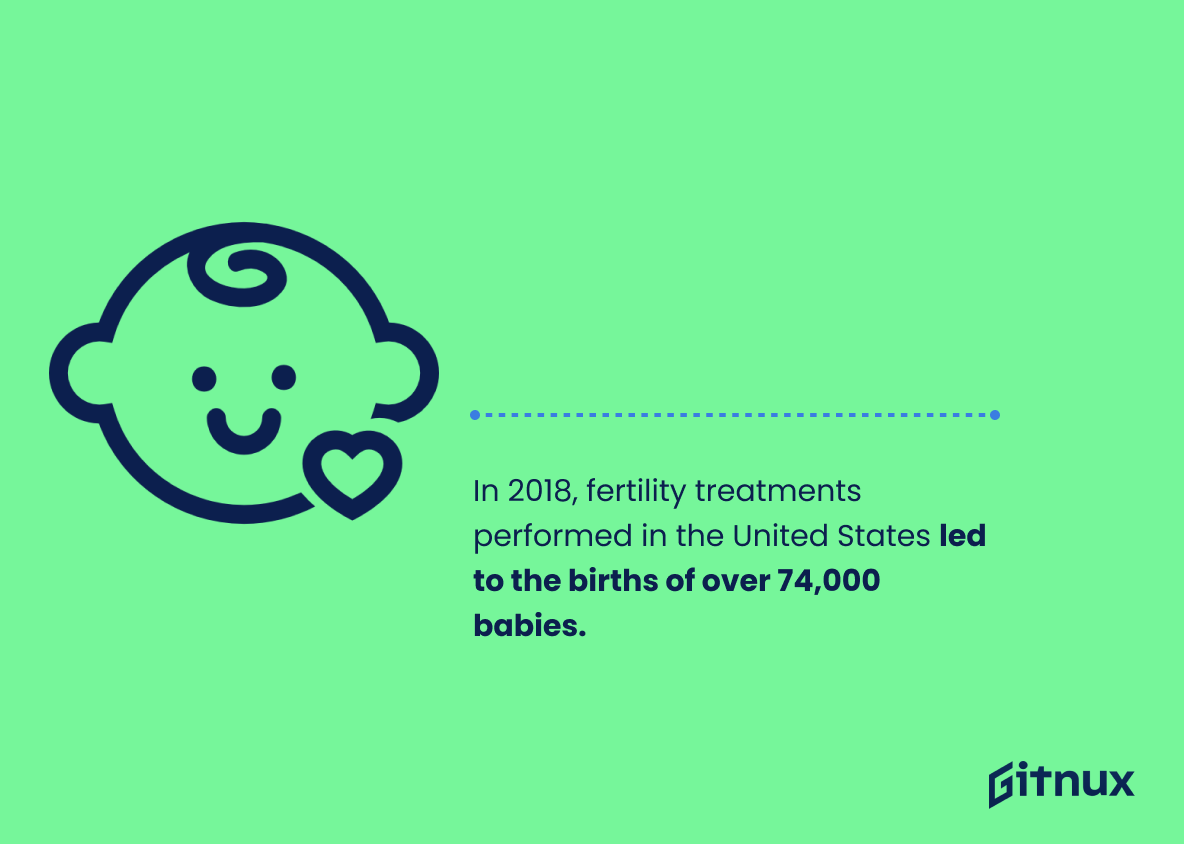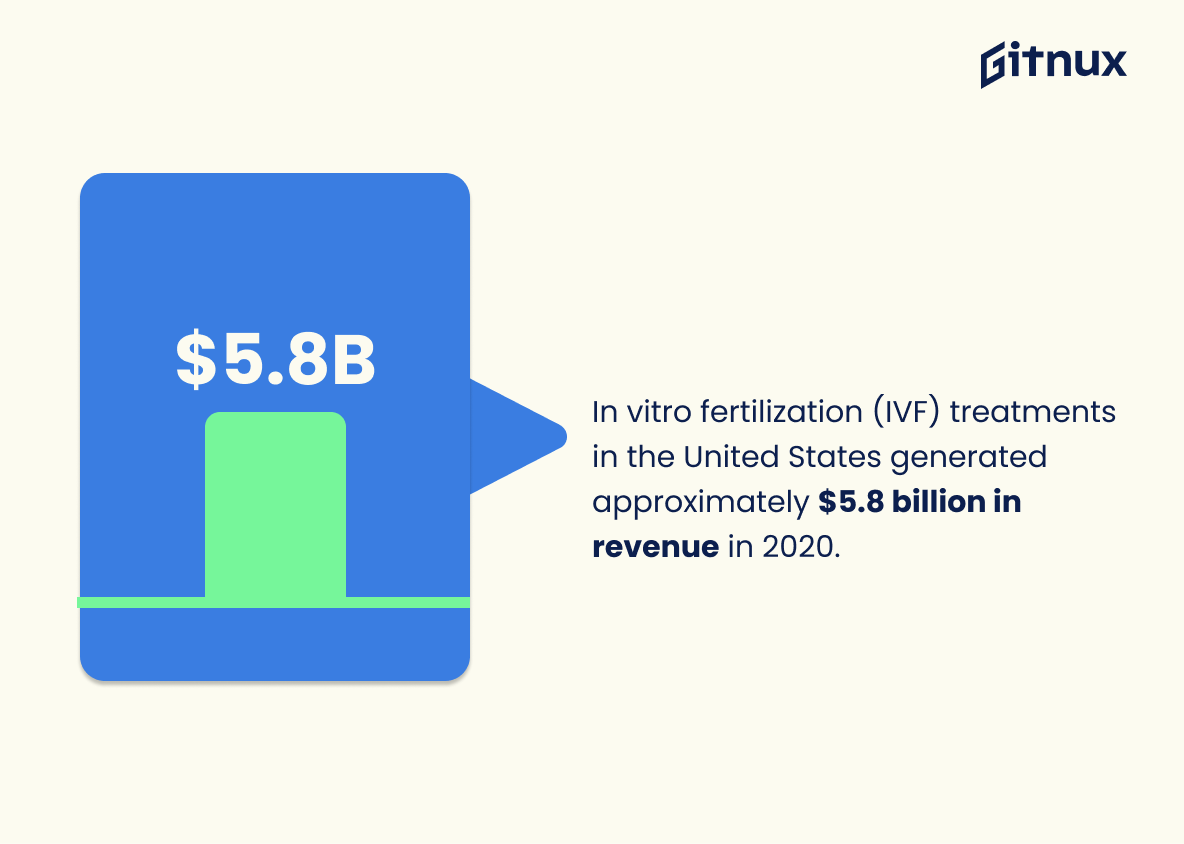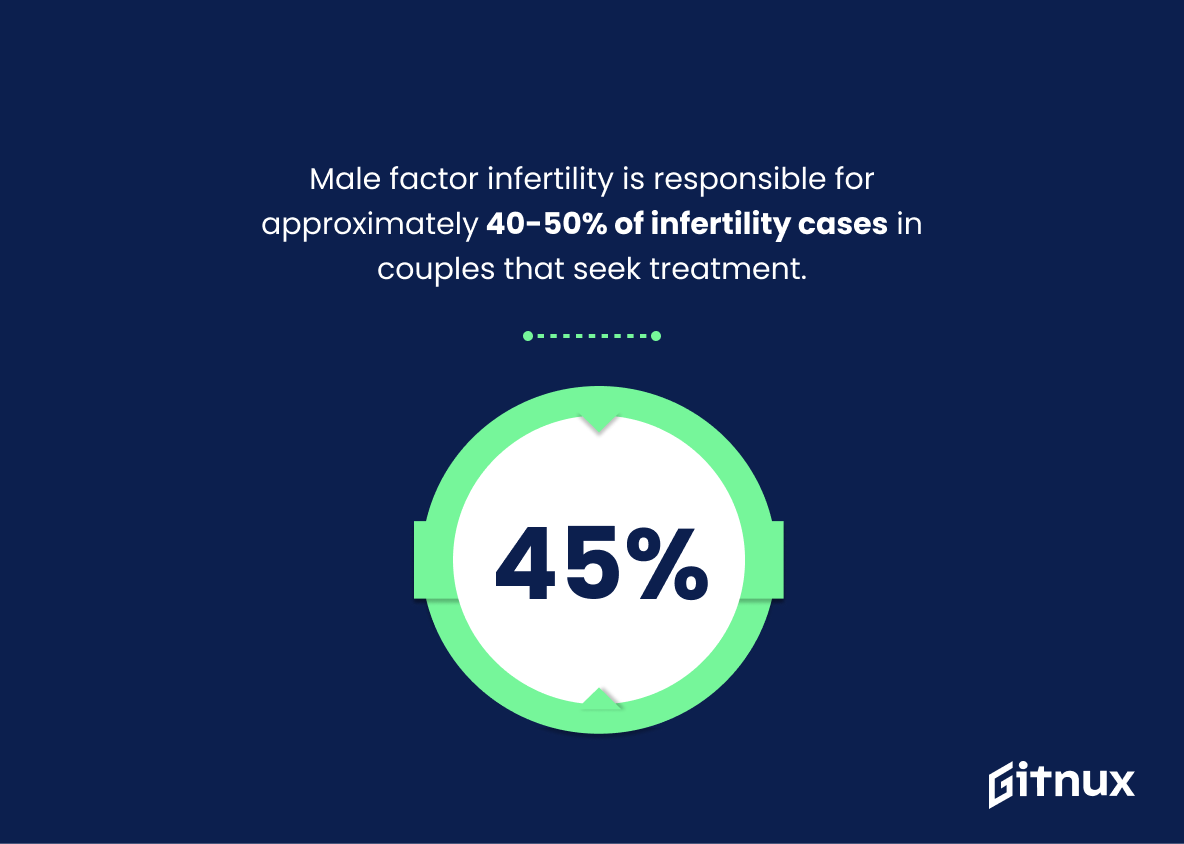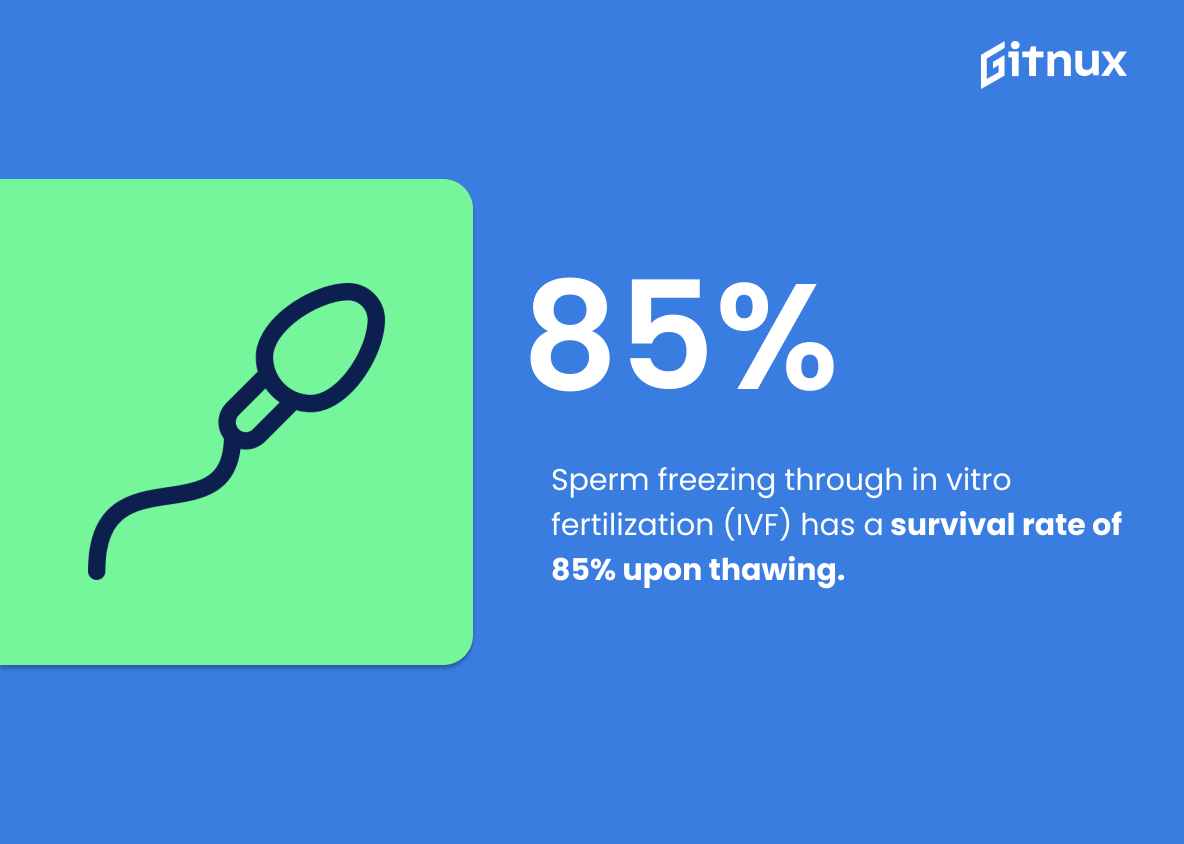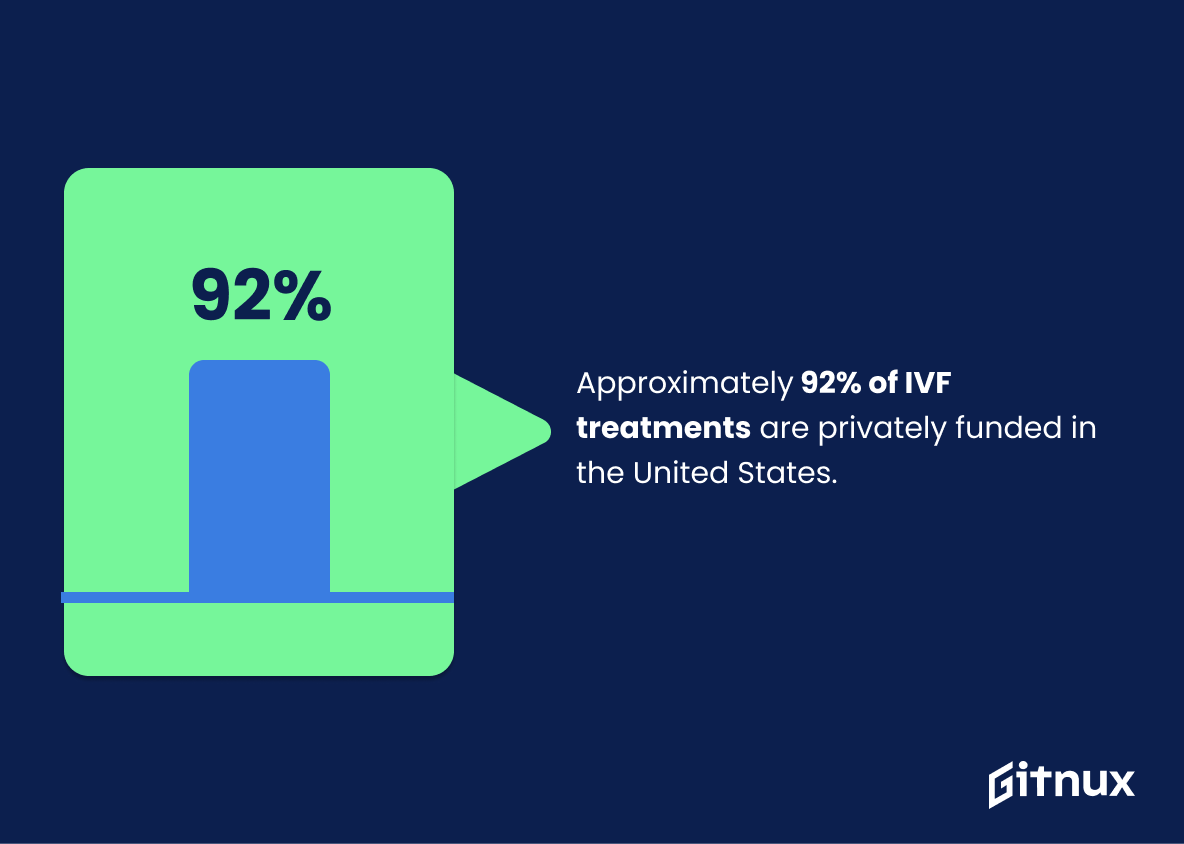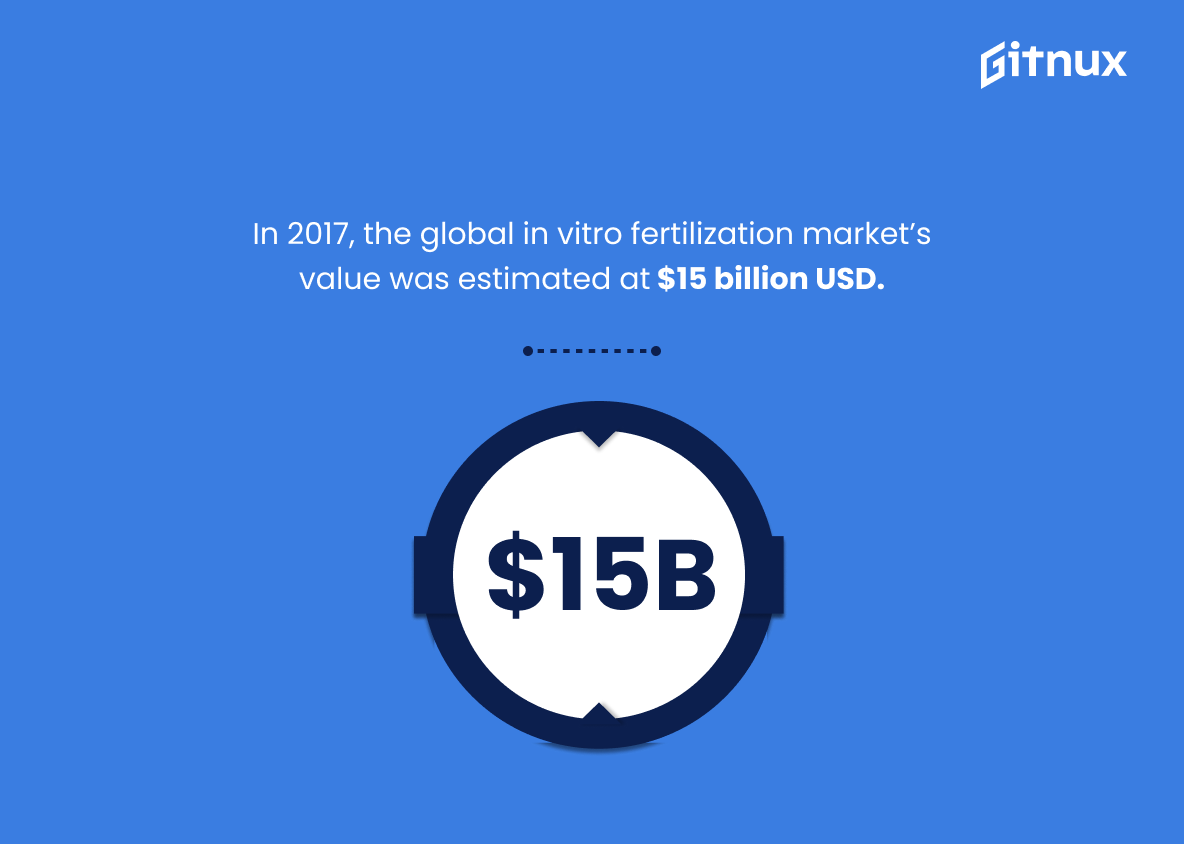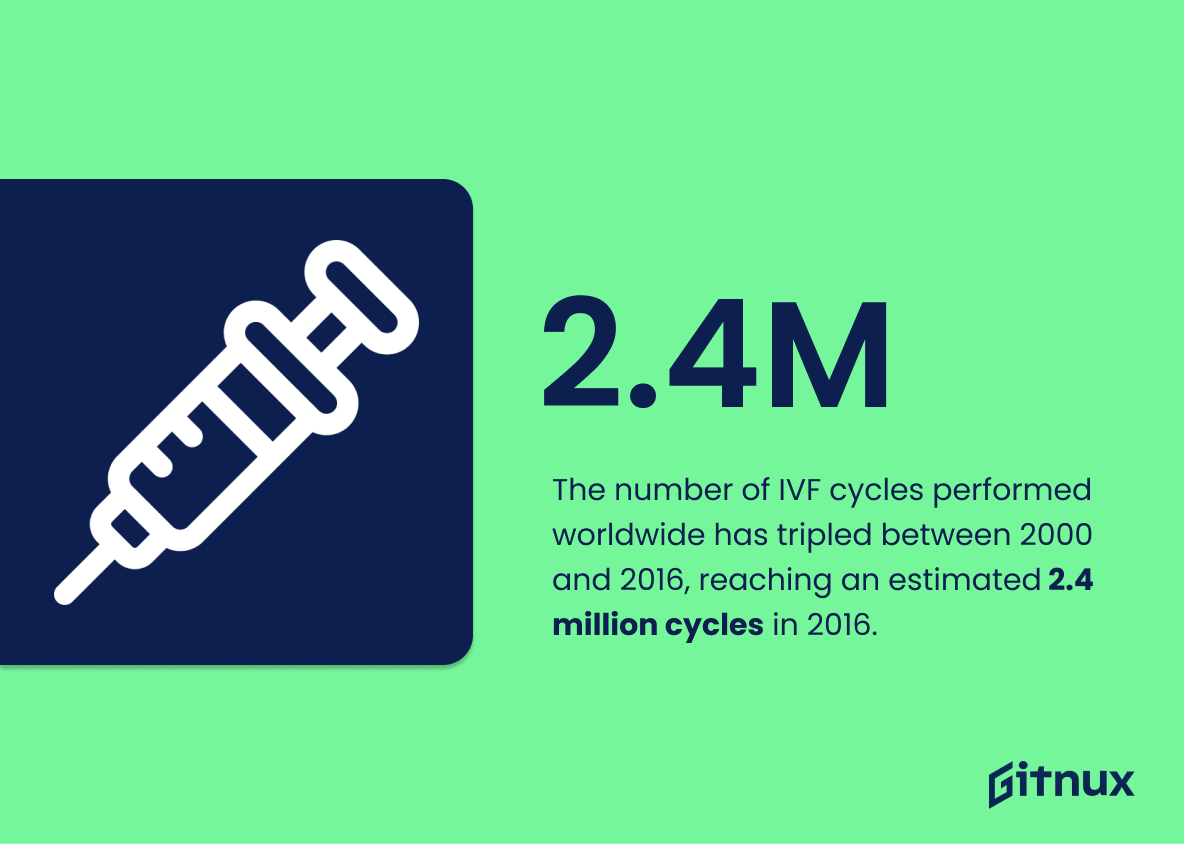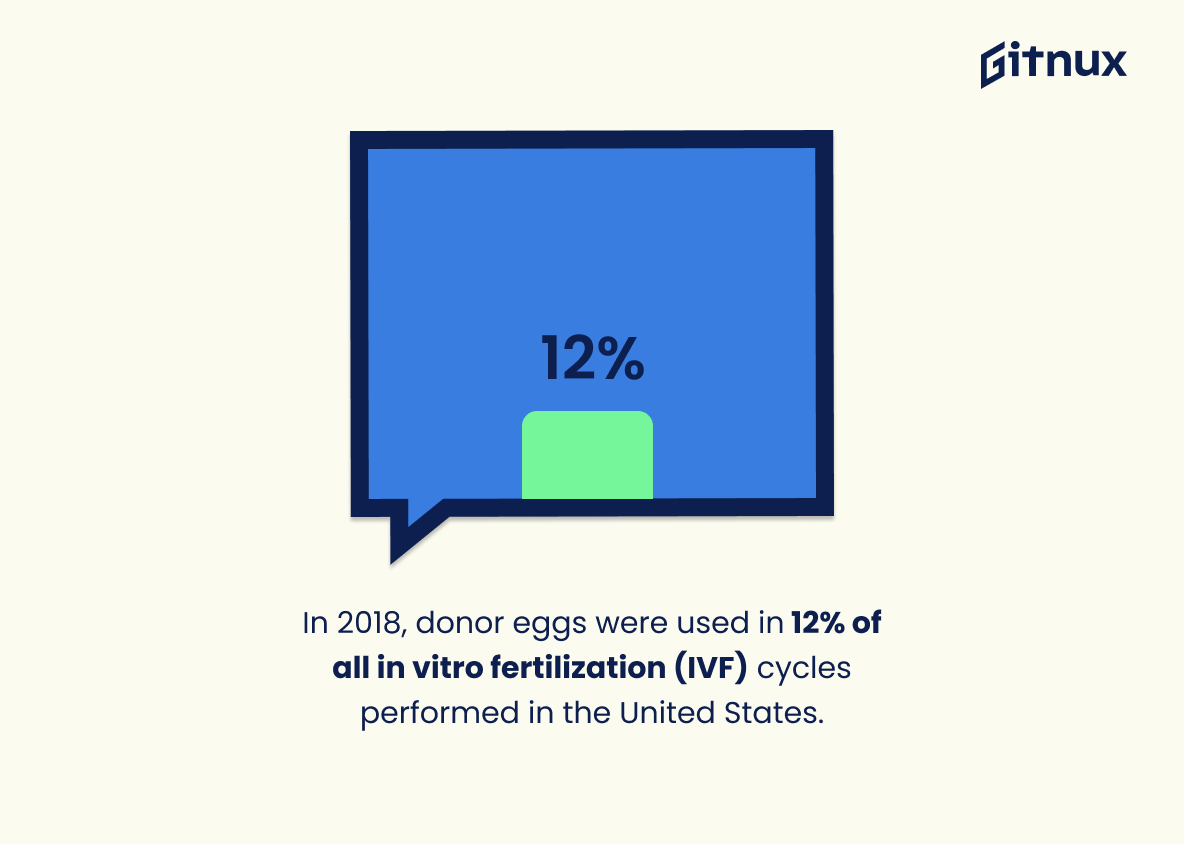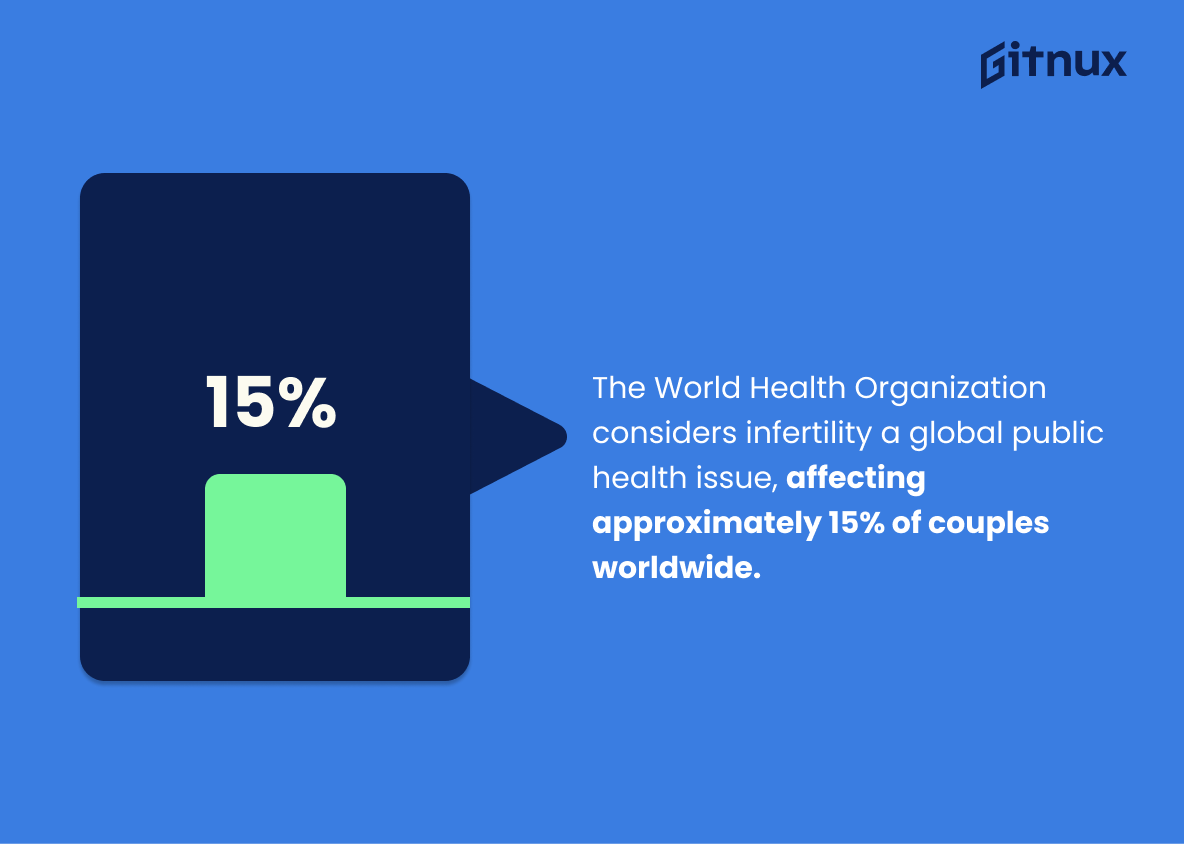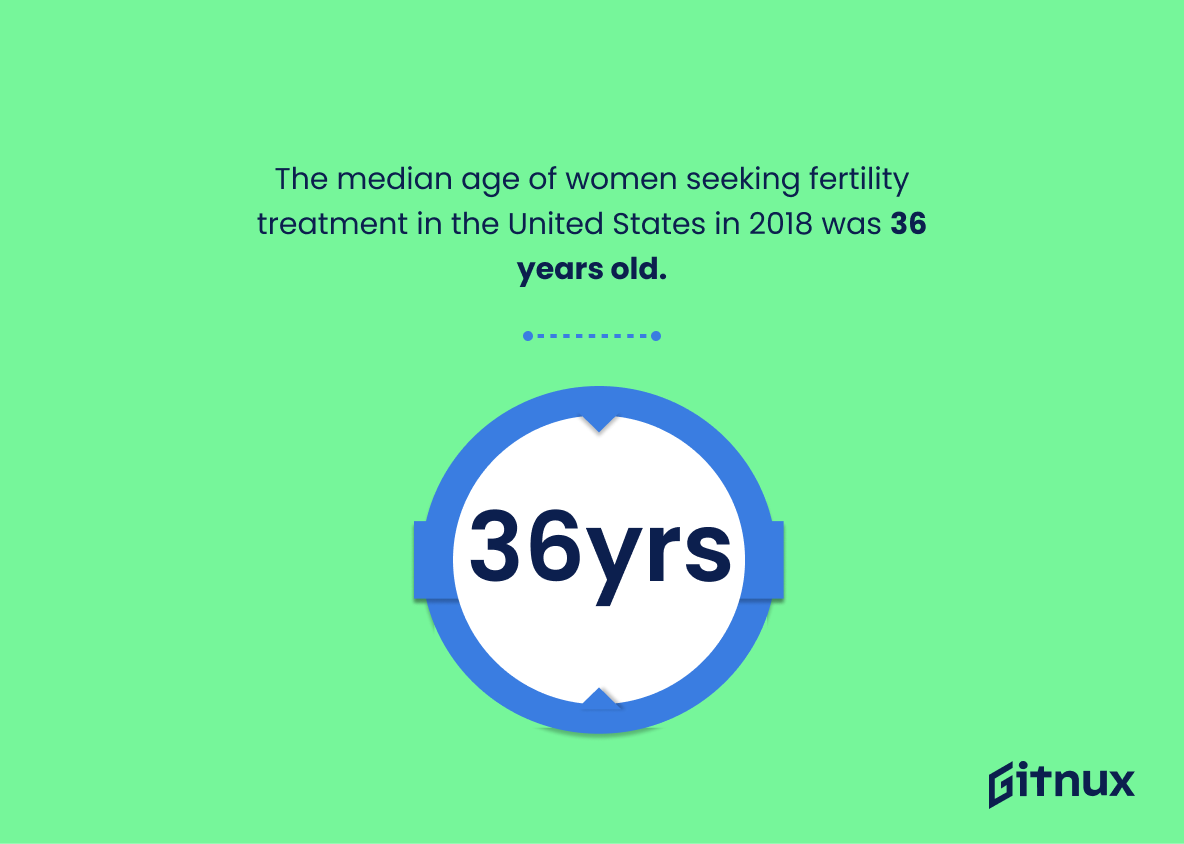Fertility treatments have become increasingly popular in recent years, with more and more couples seeking out these services to help them conceive. As of 2018, approximately 12% of women (7.3 million) in the United States aged 15-49 had utilized fertility services. In vitro fertilization (IVF) procedures have a success rate of around 40% for women under 35; however, this number decreases significantly as age increases. There are currently over 480 fertility clinics operating within the United States alone and 95% of infertility treatments involve medication or surgery rather than assisted reproductive technology (ART). Fertility treatments performed in 2018 led to 74,000 babies being born that year while generating $5.8 billion USD globally from IVF treatment cycles alone. Male factor infertility is responsible for up to 50% of cases where couples seek treatment and sperm freezing through IVF has an 85% survival rate upon thawing. The global market value for IVFs was estimated at $15 billion USD in 2017 with 2.4 million cycles performed worldwide that same year – triple what it was back in 2000. Donor eggs were used by 12%, on average, during all US based IVF cycles conducted throughout 2018 while 20-30 % opted for multiple embryo transfer when receiving fertility treatments overall – regardless if they’re using donor eggs or not. Lastly but certainly not leastly: Intracytoplasmic sperm injection (ICSI), which is widely used among male factor infertile couples achieved a pregnancy rate per cycle at 30%. With such high numbers across the board regarding both statistics related to usage rates as well as success stories associated with various types of fertility treatments available today – there’s no denying how important this topic truly is on a global scale considering WHO considers it a public health issue affecting 15 percent off all couples worldwide..
This statistic is a powerful reminder of the prevalence of fertility services in the United States. It highlights the fact that millions of women are actively seeking assistance in conceiving a child, and that fertility services are an important part of many women’s lives. This statistic is a testament to the importance of fertility clinics and the services they provide, and serves as a reminder of the need for continued support and resources for those seeking fertility assistance.
In vitro fertilization (IVF) procedures have a success rate of approximately 40% for women aged below 35.
This statistic is a crucial piece of information for anyone considering IVF as a fertility treatment option, particularly for women aged below 35. It provides a realistic expectation of the likelihood of success, allowing individuals to make an informed decision about their fertility journey. Furthermore, it highlights the importance of seeking out a reputable fertility clinic with a proven track record of successful IVF procedures.
Fertility Clinic Statistics Overview
As of 2020, there are over 480 fertility clinics in the United States.
This statistic is a testament to the growing demand for fertility clinics in the United States. It speaks to the fact that more and more people are seeking out fertility treatments, and that the industry is responding to this need. It is a powerful indicator of the importance of fertility clinics in the lives of many Americans.
Approximately 95% of infertility treatments involve medication or surgery, not assisted reproductive technology (ART).
This statistic is a powerful reminder that infertility treatments are not limited to ART. It highlights the fact that there are other options available to those struggling with infertility, and that these treatments can be just as effective. This is an important point to make in a blog post about fertility clinic statistics, as it can help to provide a more comprehensive understanding of the treatments available and the success rates associated with them.
In 2018, fertility treatments performed in the United States led to the births of over 74,000 babies.
This statistic is a testament to the success of fertility treatments in the United States, demonstrating that these treatments are capable of helping thousands of couples achieve their dreams of having a baby. It is a powerful reminder of the importance of fertility clinics and the vital role they play in helping couples become parents.
In vitro fertilization (IVF) treatments in the United States generated approximately $5.8 billion in revenue in 2020.
This statistic is a testament to the growing demand for IVF treatments in the United States. It speaks to the fact that more and more couples are turning to IVF to help them conceive, and that fertility clinics are reaping the rewards of this increased demand. It also highlights the importance of fertility clinics in providing a much-needed service to those struggling to conceive.
Male factor infertility is responsible for approximately 40-50% of infertility cases in couples that seek treatment.
This statistic is a powerful reminder of the importance of male fertility in couples seeking treatment for infertility. It highlights the need for both partners to be evaluated and treated in order to maximize the chances of a successful outcome. It also serves as a reminder that infertility is not solely a female issue, and that male fertility should not be overlooked.
Sperm freezing through in vitro fertilization (IVF) has a survival rate of 85% upon thawing.
This statistic is a testament to the efficacy of IVF as a fertility treatment option, with a success rate of 85% for sperm freezing. This is an encouraging sign for those considering IVF, as it demonstrates that the process is reliable and effective in helping couples achieve their dream of having a baby. This statistic is an important part of any discussion about fertility clinic statistics, as it provides a clear indication of the success rate of IVF and the potential it has to help couples conceive.
Fertility clinics experienced an annual growth of 4.6% between 2015 and 2020 in the United States.
This statistic is a testament to the increasing demand for fertility clinics in the United States. It shows that more and more people are turning to fertility clinics to help them start or expand their families. This trend is likely to continue as more couples seek out fertility treatments to help them conceive. This statistic is a valuable insight into the current state of fertility clinics in the United States and provides a glimpse into the future of fertility treatments.
Women who undergo fertility treatments have a 2-4% increased risk of having a child with a congenital abnormality.
This statistic is a crucial reminder of the potential risks associated with fertility treatments. It highlights the importance of considering all the possible outcomes before making a decision about fertility treatments. It also serves as a warning to those considering fertility treatments to be aware of the potential risks and to discuss them with their doctor.
Approximately 92% of IVF treatments are privately funded in the United States.
This statistic is a telling indication of the state of fertility care in the United States. It highlights the fact that the majority of IVF treatments are funded by individuals, rather than by public health insurance or other government-funded programs. This means that many couples are having to bear the financial burden of fertility treatments, which can be costly and out of reach for many. This statistic is a reminder of the need for more accessible and affordable fertility care in the United States.
In 2017, the global in vitro fertilization market’s value was estimated at $15 billion USD.
This statistic is a testament to the immense size of the global in vitro fertilization market, demonstrating the importance of fertility clinics in the lives of many people. It is a powerful reminder of the impact that fertility clinics have on the lives of those who seek their services, and the importance of understanding the statistics associated with them.
The number of IVF cycles performed worldwide has tripled between 2000 and 2016, reaching an estimated 2.4 million cycles in 2016.
This statistic is a testament to the growing demand for fertility treatments, as the number of IVF cycles performed worldwide has tripled in the span of 16 years. This indicates that more and more couples are turning to IVF to help them conceive, and that fertility clinics are becoming increasingly popular. This is an important statistic to consider when discussing fertility clinic statistics, as it provides insight into the current state of fertility treatments.
In 2018, donor eggs were used in 12% of all in vitro fertilization (IVF) cycles performed in the United States.
This statistic is a telling indication of the prevalence of donor eggs in the IVF process. It highlights the fact that many couples are turning to donor eggs to help them conceive, and that this is becoming an increasingly popular option. This statistic is important to consider when discussing fertility clinic statistics, as it provides insight into the current trends in fertility treatments.
Approximately 20-30% of couples receiving fertility treatments opt for multiple embryo transfer.
This statistic is a telling indication of the prevalence of multiple embryo transfer among couples receiving fertility treatments. It highlights the importance of understanding the risks associated with this procedure, as well as the potential benefits, when considering fertility treatments.
The World Health Organization considers infertility a global public health issue, affecting approximately 15% of couples worldwide.
This statistic is a stark reminder of the prevalence of infertility, highlighting the need for more resources to be devoted to helping couples struggling with infertility. It is a call to action for fertility clinics to step up and provide the necessary support and services to those affected. It also serves as a reminder of the importance of understanding the causes of infertility and developing treatments to address them.
The median age of women seeking fertility treatment in the United States in 2018 was 36 years old.
This statistic is a telling indication of the reality of fertility treatment in the United States. It reveals that women are increasingly seeking fertility treatment at a younger age, suggesting that fertility issues are becoming more common among women of all ages. This statistic is a powerful reminder that fertility issues are a growing concern and that fertility clinics are an important resource for women seeking to start a family.
Conclusion
Fertility treatments have become increasingly popular in the United States, with over 7.3 million women aged 15-49 utilizing fertility services as of 2018. In vitro fertilization (IVF) is one of the most common forms of assisted reproductive technology and has a success rate of approximately 40% for women under 35 years old. However, success rates decline significantly in older age groups due to decreased egg quality and quantity. As such, there are now over 480 fertility clinics across the country that offer various types of treatment options including medication or surgery, IVF procedures, donor eggs and sperm freezing techniques among others. Despite these advances in medical technology however, infertility remains a global public health issue affecting around 15% couples worldwide according to World Health Organization estimates; this number increases further when considering male factor infertility which accounts for up to 50% cases requiring treatment globally. With an estimated $5 billion USD generated from IVF treatments alone within US borders annually since 2020 coupled with increasing demand for fertility services amongst aging populations – it is clear that more research needs to be done into understanding how best we can support those seeking assistance on their journey towards parenthood while also ensuring safety standards remain high throughout all stages involved in achieving successful outcomes through modern day reproductive technologies available today
References
0. – https://www.ncbi.nlm.nih.gov
1. – https://www.who.int
2. – https://www.grandviewresearch.com
3. – https://www.sart.org
4. – https://www.pubmed.ncbi.nlm.nih.gov
5. – https://www.repromed.com.au
6. – https://www.sartcorsonline.com
7. – https://www.reproductivefacts.org
8. – https://www.ibisworld.com
9. – https://www.ivfauthority.com


